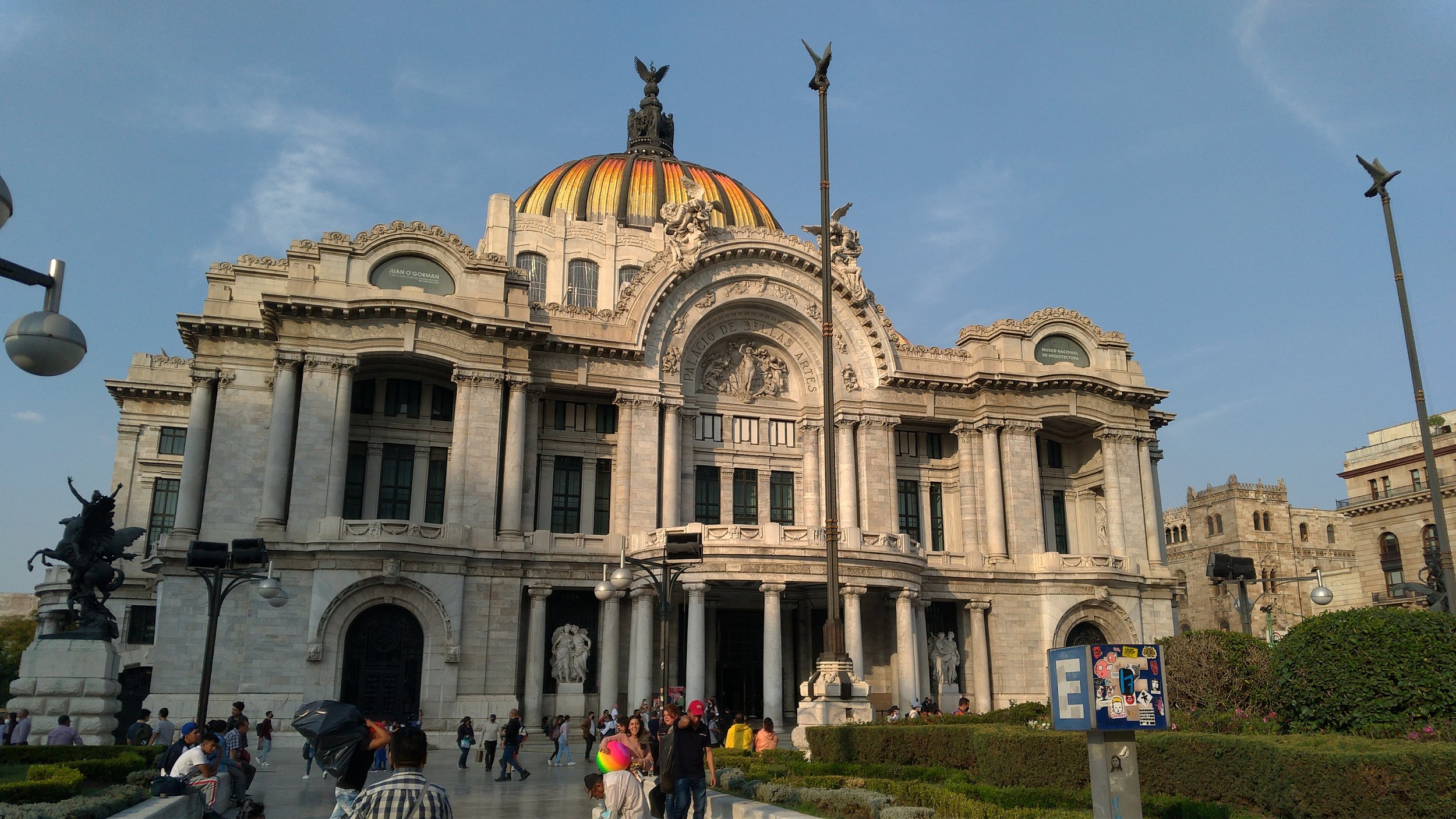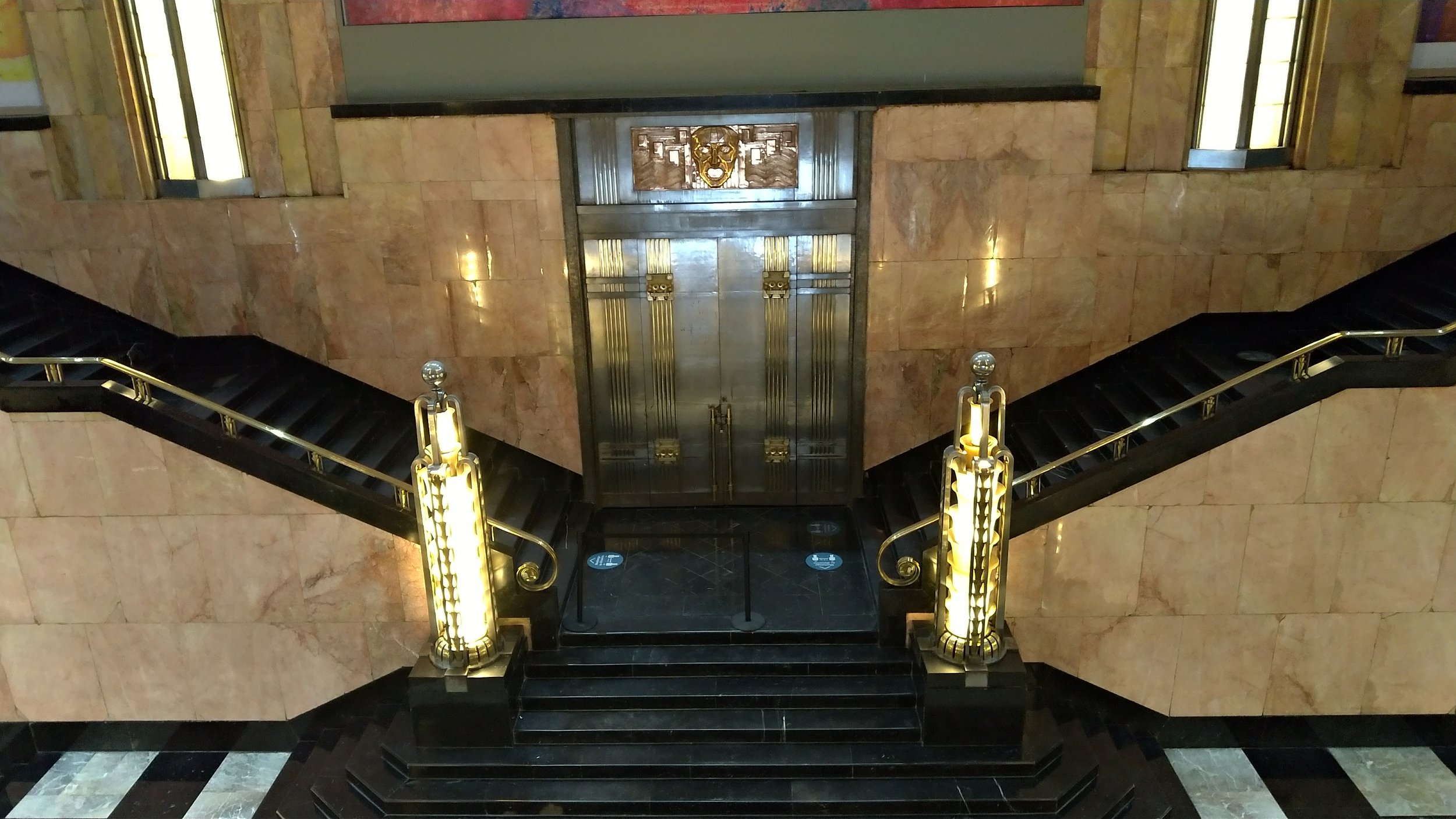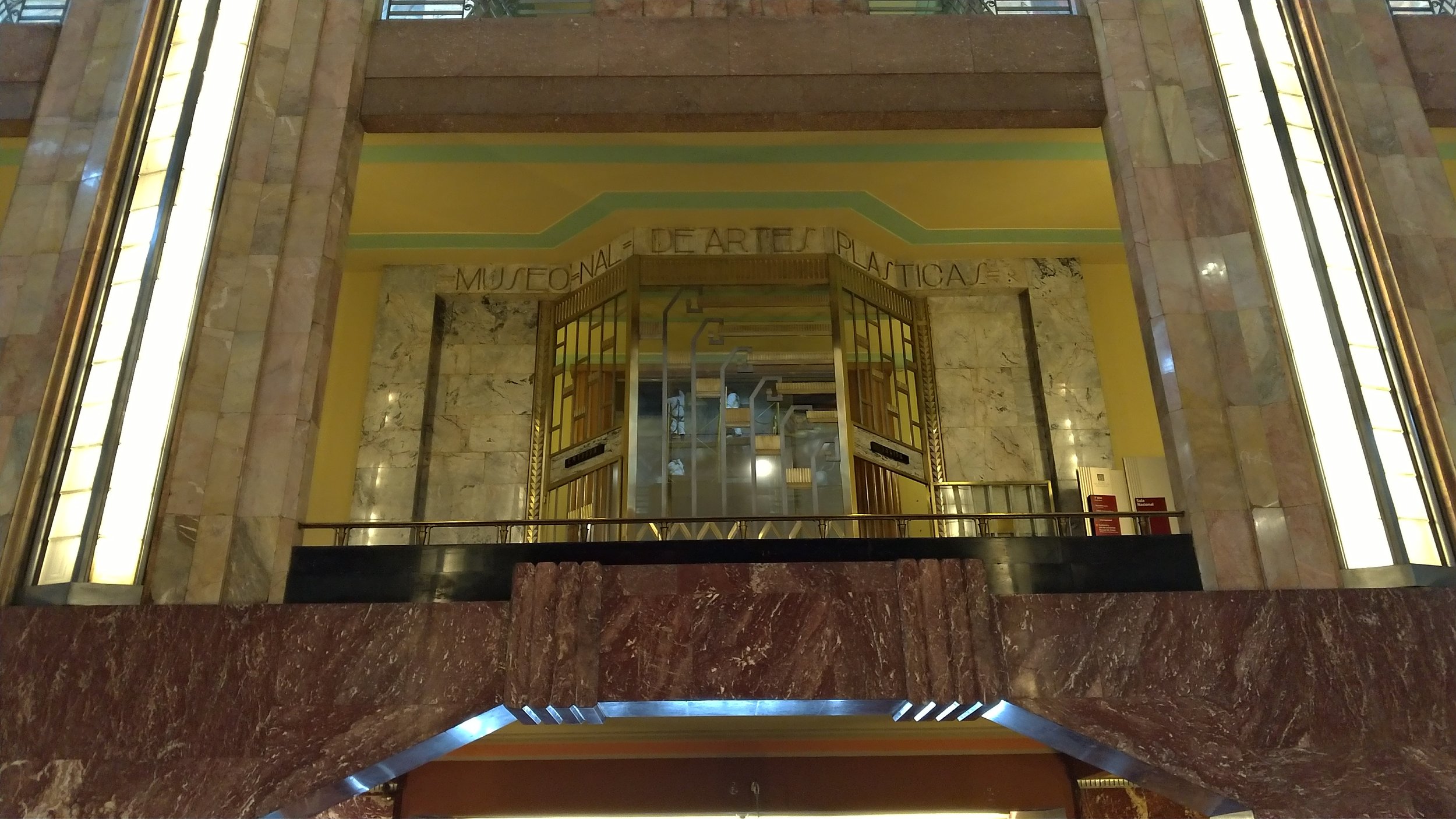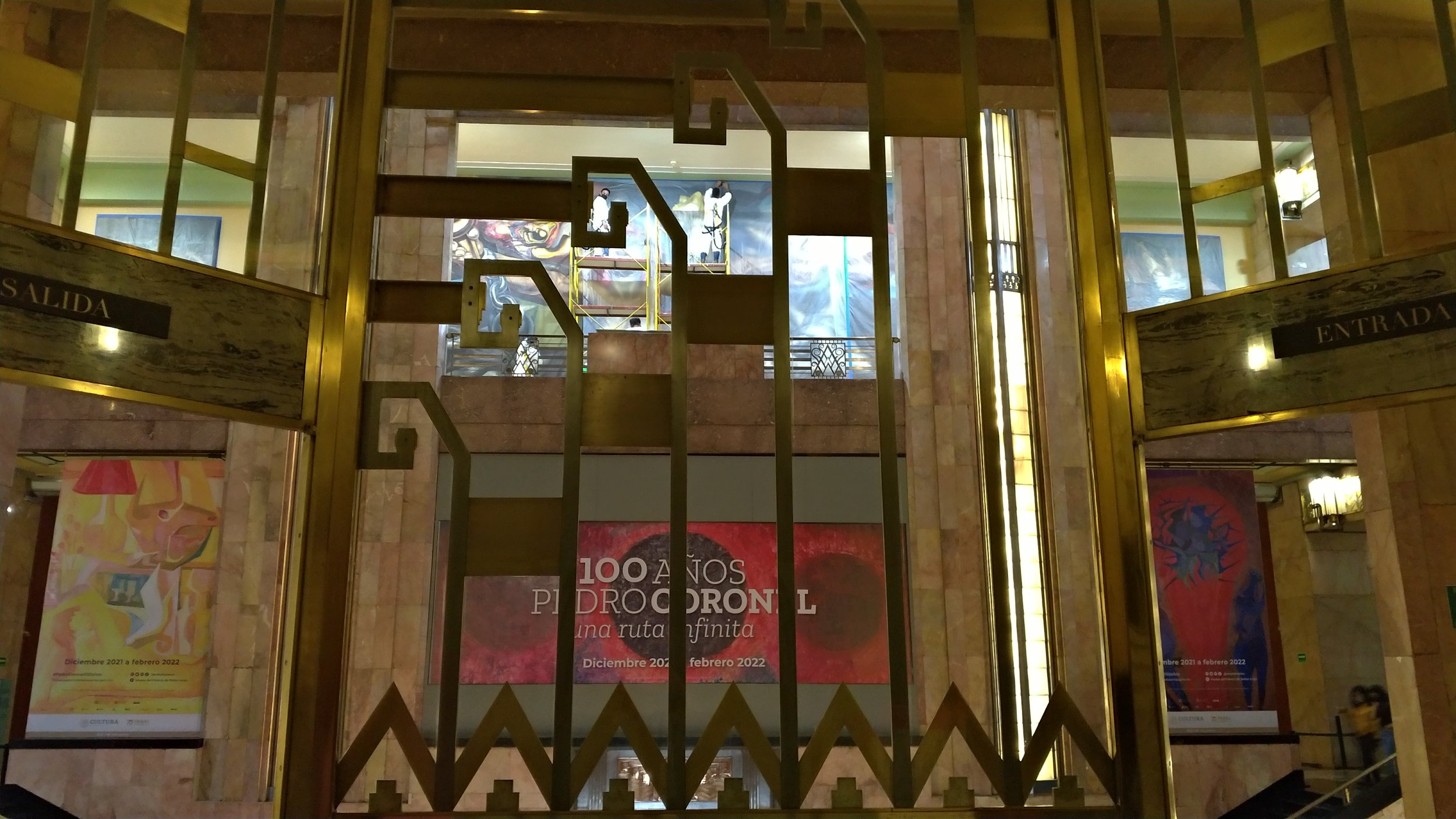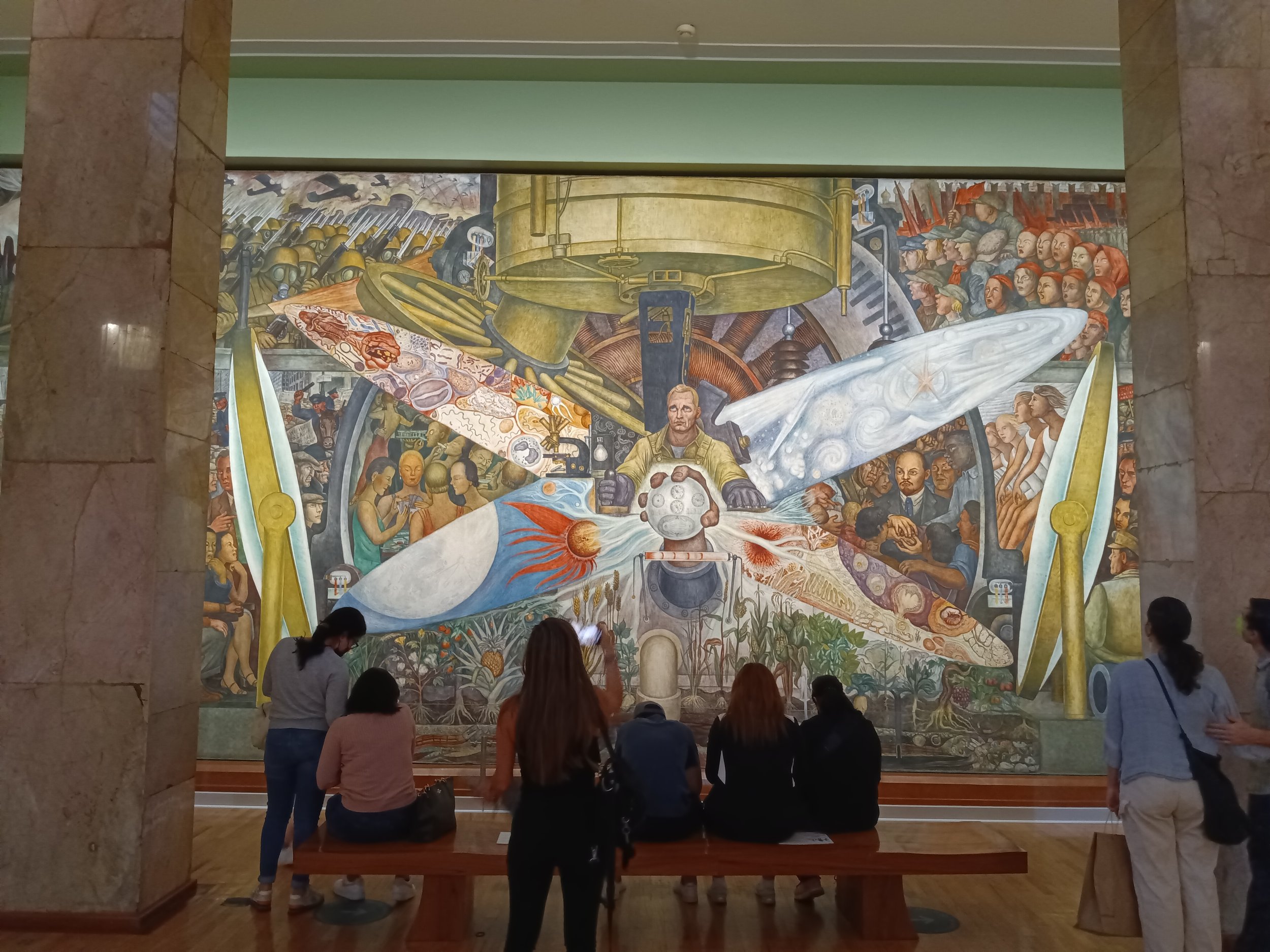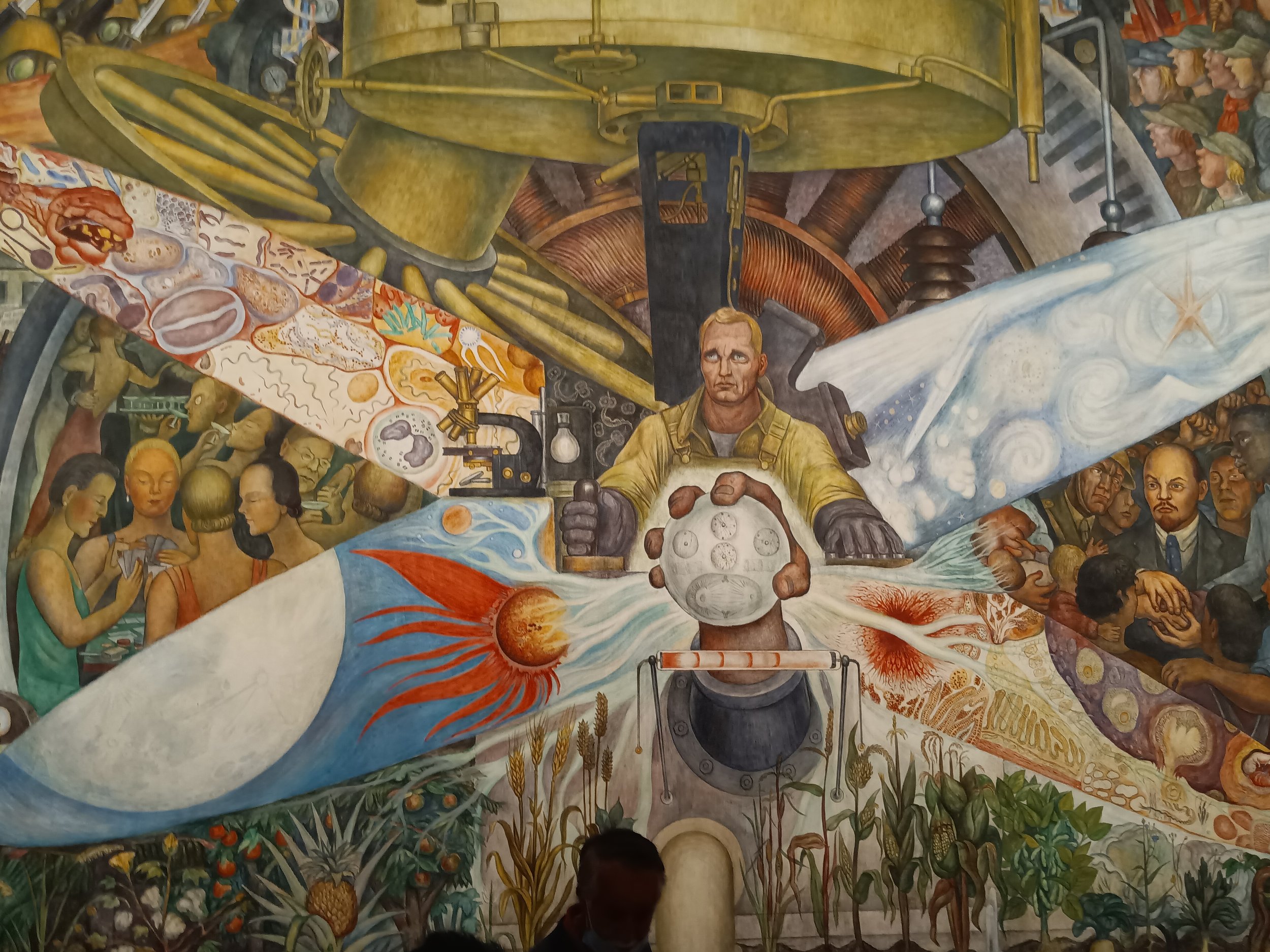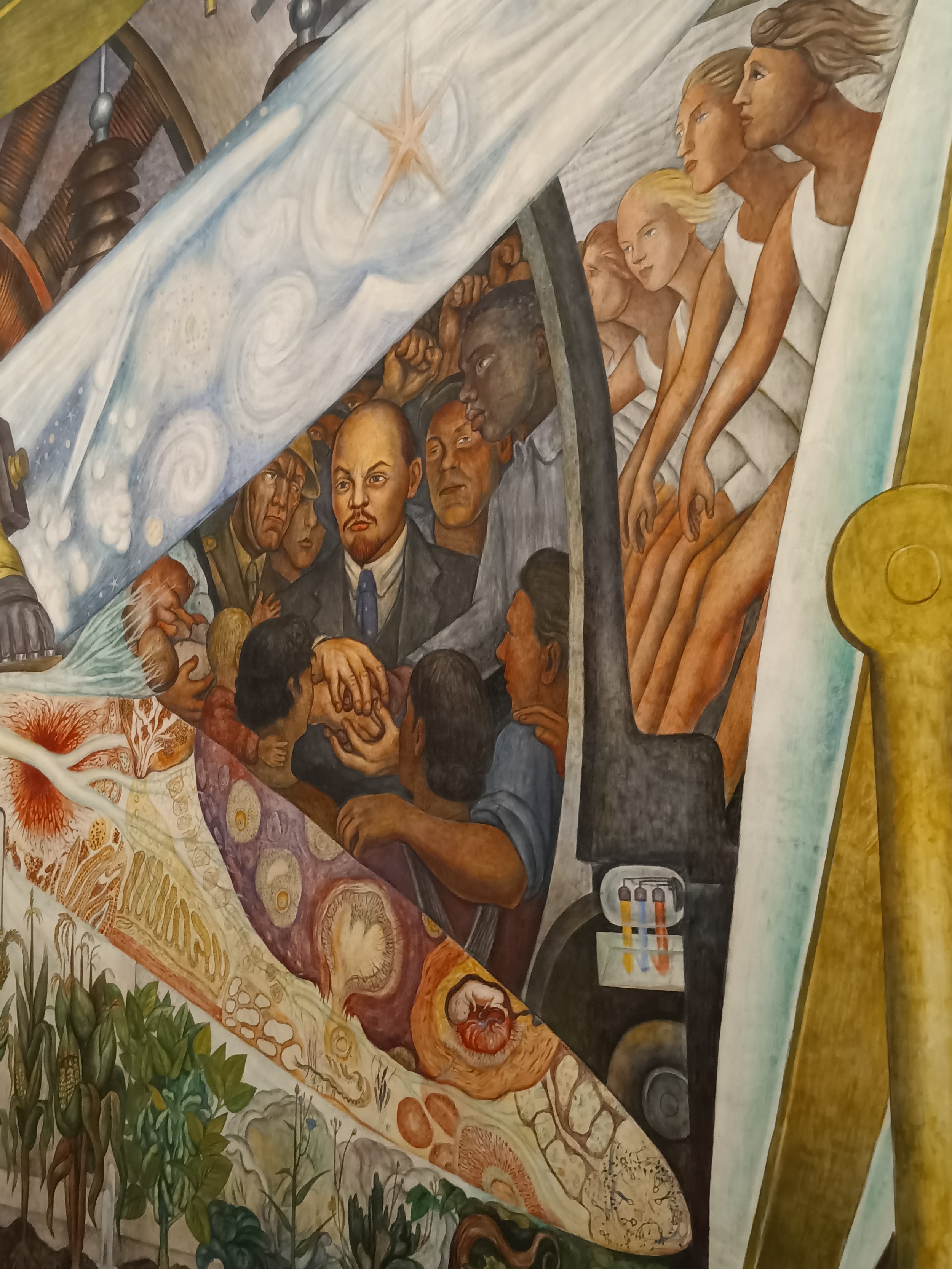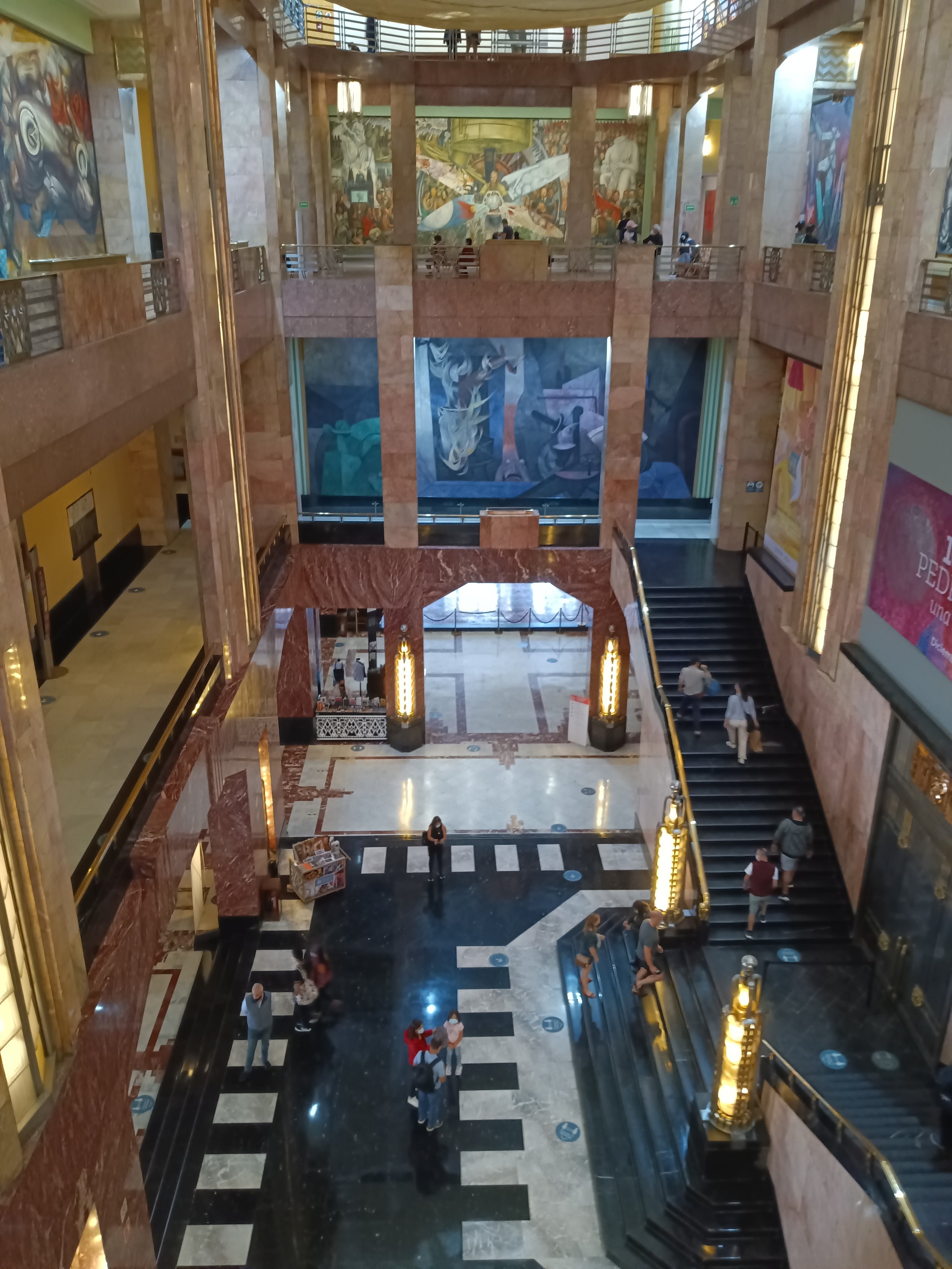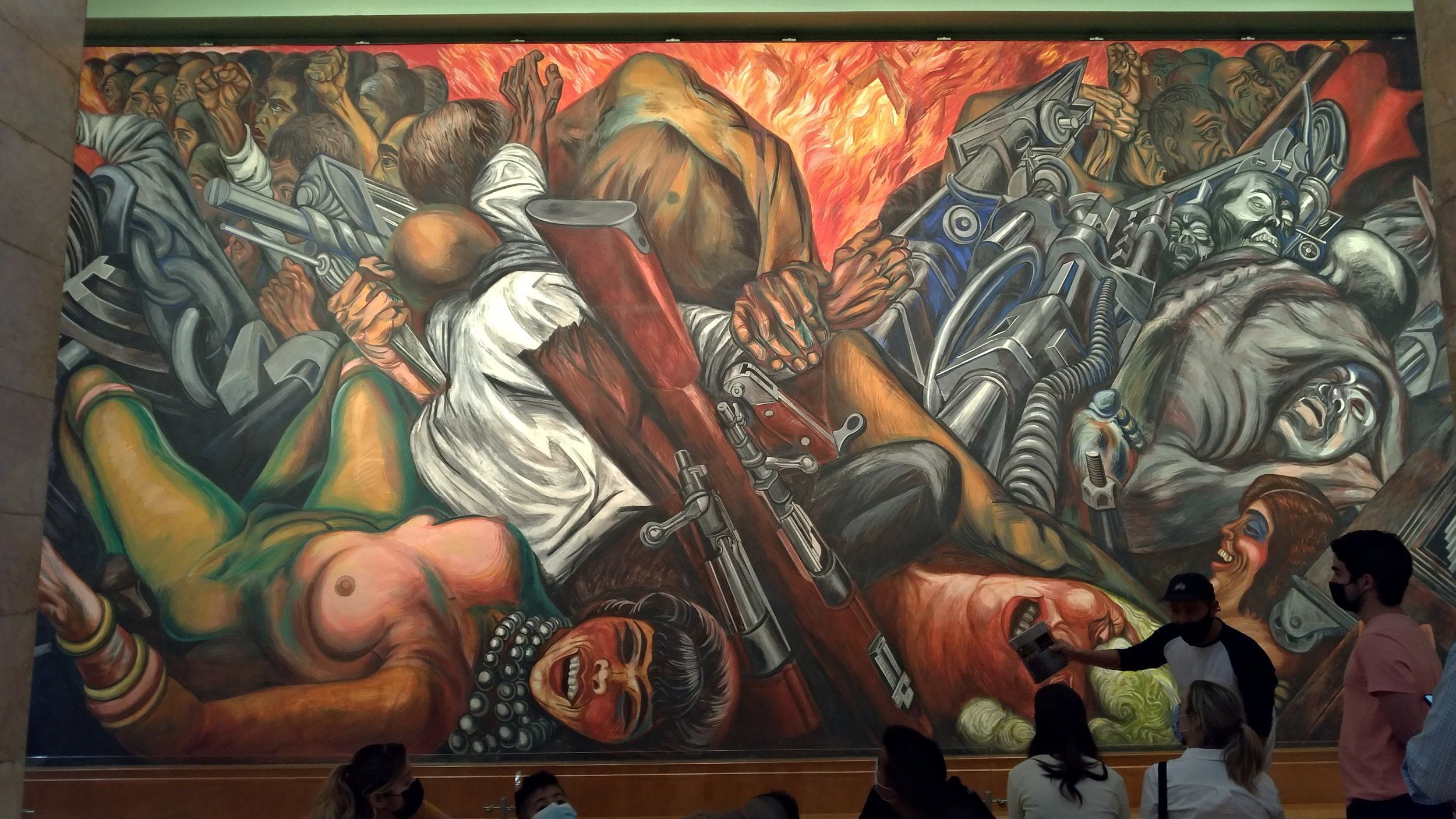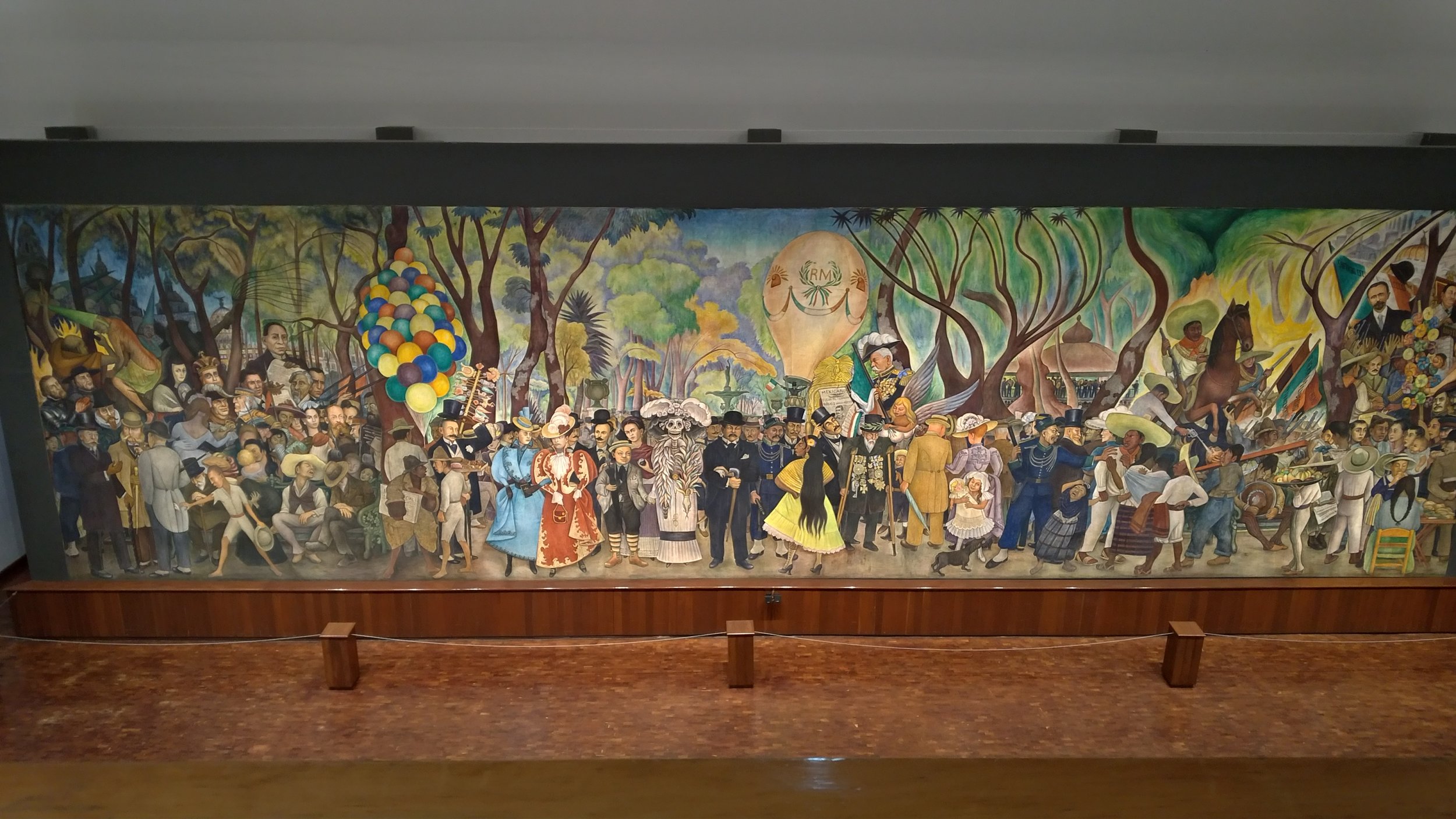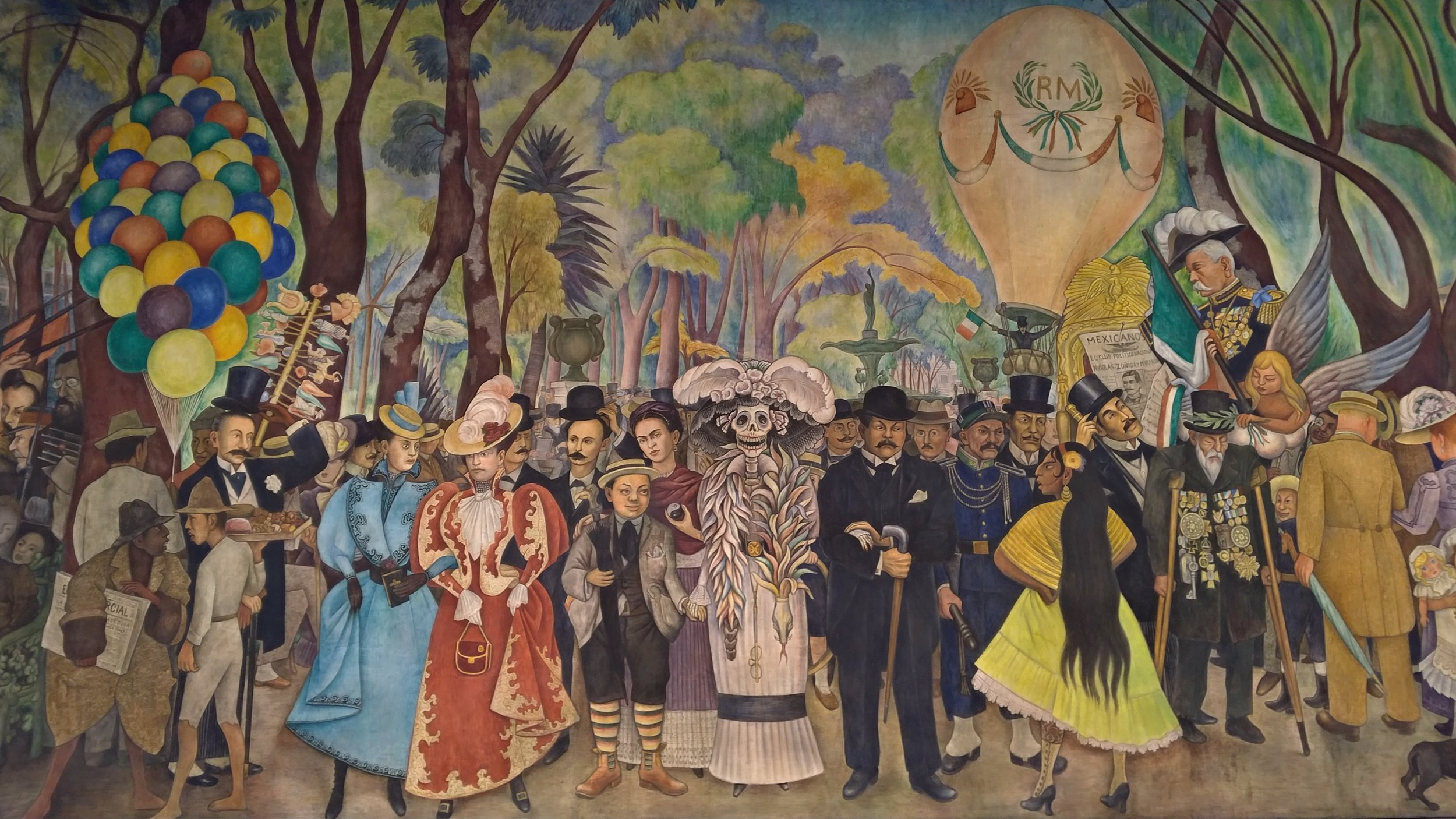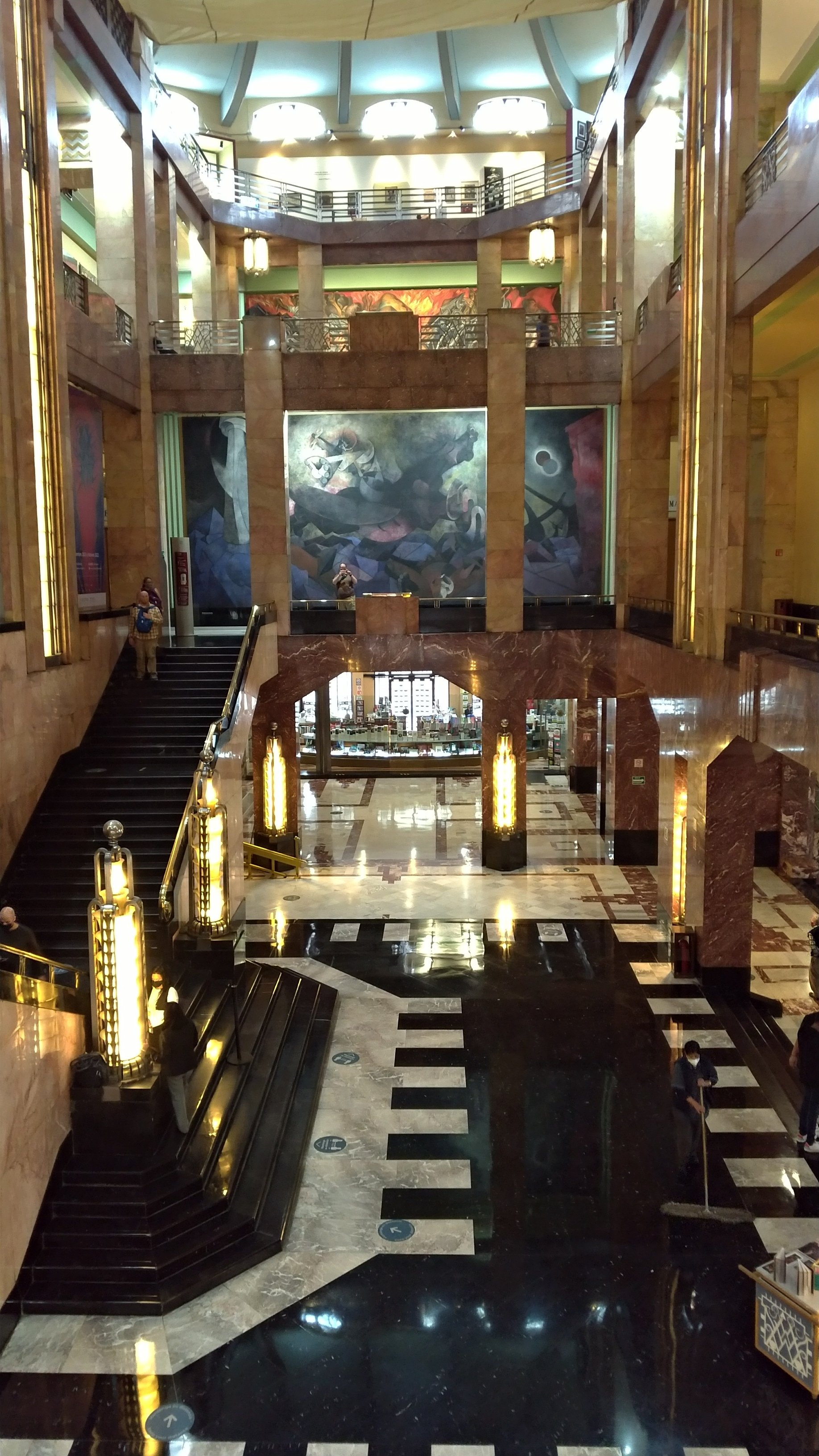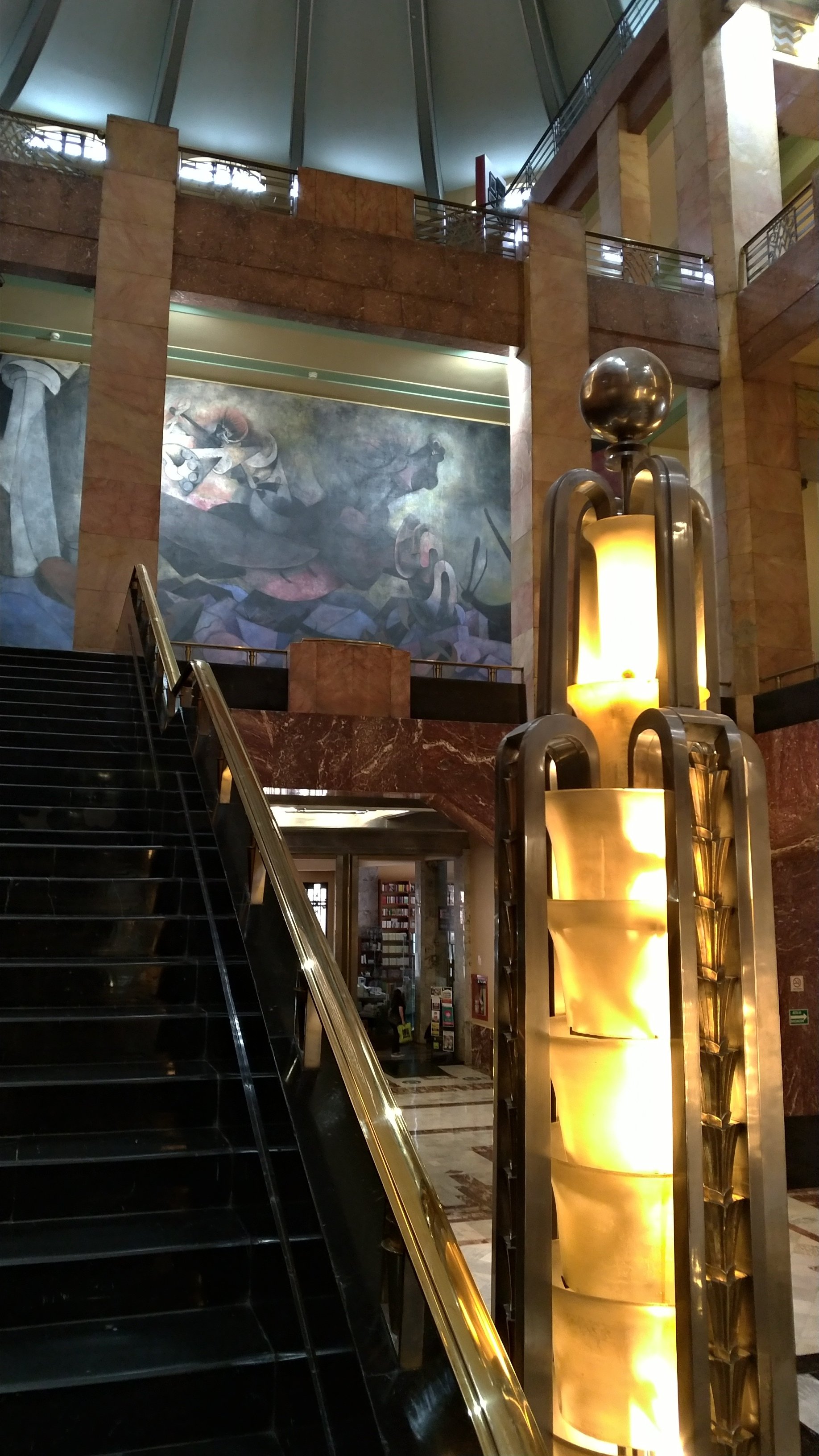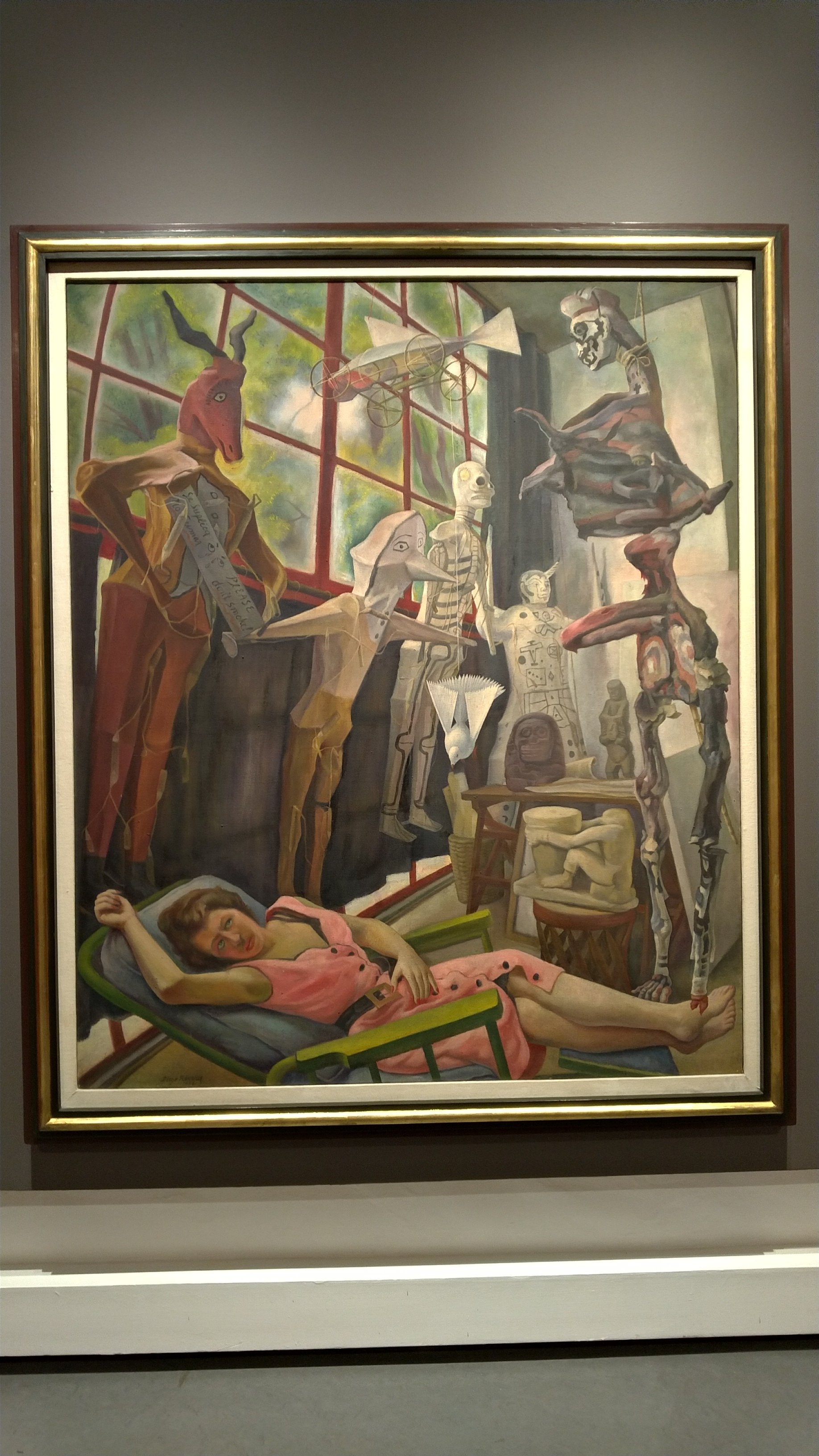The Palacio de Bellas Artes (Fine Arts Palace) seems unreal to the first-time Mexico City visitor. Even if you didn't know what the splendid, white marble building is, chances are “palace” would be the first word to come to mind, as you marvel at columns, curves, carved snakes framing arches, floral motifs meandering on metallic gates, with the whole twined in an organic Neoclassical and Art Nouveau ensemble, culminating in a sparkling yellow-orange dome that glows in the January afternoon light. Ethereal sculptural female figures are swaying by the entrance, inviting you in.
Writing a year ago about Diego Rivera's mural “Man at the Crossroads” (1932), which I had seen in a temporary exhibition at New York's Whitney Museum, little did I know that, exactly one year later, I would find myself again face to face with Lenin and the rest of the figures depicted in the celebrated composition, this time at its headquarters. (Originally destined to grace the newly erected Rockefeller Center, the work was rejected by the American organization because of the addition of the Russian Revolution leader's portrait; however, it did find housing in the architectural jewel of Mexico's capital.)
Surprises keep piling up, since, upon entering, I find myself immersed in the most luxurious Art Deco interior I have seen in my life! Floors, staircases and walls are all made of glossy black, pink and beige marble. Exquisite geometric fixtures rise vertically like columns or sculptures, while shiny metallic banisters, railings and balconies lead to the three floors comprising murals by the “tres grandes” (José Clemente Orozco, Diego Rivera and David Alfaro Siqueiros), but also other works as well. The esthetic surprise between exterior and interior is explained by the two construction phases (1904 and 1932) of the building. (Ironically, the Art Deco splendor brings to mind Radio City Music Hall, which is part of the aforementioned Rockefeller Center...)
So, here I am, meeting again with “Man at the Crossroads” (who, to be precise, has been renamed “Man, Controller of the Universe”), and I discover new details, like the fascinating depiction of the natural world. The plants' roots on the base of the human crowd trigger obvious yet vital questions around the crisis facing humanity today -a crisis brought about precisely by man as “controller of the universe”...
On the opposite side of the floor the spectator is drawn in by Orozco's “Catharsis or humanity's eternal struggle for a better world” (1934).
The next day we set out to explore the Financial District, but on our way there, we bump into the Museo Mural Diego Rivera. Although the museum is closing in ten minutes, the super-polite employees welcome us warmly and, after the by now standardized trio of temperature-taking, disinfecting of hands and shoes, and spraying of clothes, they leave us alone with the “Dream of a Sunday afternoon at Alameda Central Park” (1947). (We actually have just crossed Mexico City's central park, Alameda, which also happens to be the oldest park in America.)
In the 50-foot-wide work Rivera unfolds a panorama of moments and persons from his country's turbulent history but also from his own life. The clock is ticking, both for the museum's closing time as well as in the sequence of scenes and of faces, making the experience even more effervescent as we're rushing to take in the feast of colors and images. Suddenly, Frida Kahlo’s piercing gaze catches my eye! The painter has captured his legendary colleague and companion in his mural embracing tenderly (maternally, perhaps) his nine-year-old self. Beyond the dissolution of “realistic” ages, the dreamy landscape provides freedom for amusing scale reversals (Kahlo's wedding painting “Frida and Diego” comes to mind, where the muse-wife appears microscopic next to a giant Rivera). In her other hand, Frida is holding the Yin-Yang symbol in front of her heart, while the chubby little boy is giving his own hand to another iconic figure, the Calavera Catrina, from José Guadalupe Posada's drawing for the Day of the Dead.
Impossible to absorb every detail, to observe every facet of the mural, in the same way it is impossible to relax in this city of esthetic wonders, where architecture blows your mind so that you don't know where to turn your head to (there is no color, shape or style you do not encounter!). You simply surrender to the power of composition.
Our third encounter with Rivera (at the SHCP Art Museum) brings about a sense of intimacy, thanks to both the medium as well as the topic: the painting is titled “The artist's studio or Lucila y los judas” (1954). It's like transitioning from the monumental works into the painter's private space. Though intimate, the studio is almost as “crowded” as the murals, a scent of surrealism permeating the whole: strange, at times monstrous, constructed creatures, grotesque animals and birds, are suspended around an elegant woman posing sensually. We learn that she is the actress Lucila Balzaretti. As for the cardboard constructions (“judas”), they are typical of Mexico's popular art and form part of a Frida-Diego beloved collection. The couple thought of “judas” as the “highest expression of the spirit of Mexican civilization.”
This essay first appeared in Greek in the TA NEA newspaper (in print and online) on February 22, 2022.
Το κείμενο αυτό πρωτοδημοσιεύτηκε στην εφημερίδα ΤΑ ΝΕΑ (έντυπη και ηλεκτρονική έκδοση) στις 22 Φεβρουαρίου 2022.
